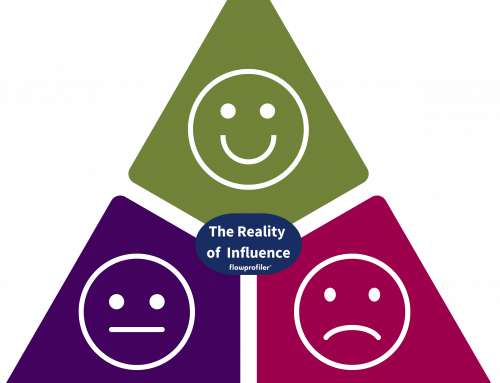Bias is an inherent aspect of human cognition, influencing the way we perceive and interpret information. It can sneak into our decision-making processes, leading us to make choices that may not be entirely fair or rational.
information. It can sneak into our decision-making processes, leading us to make choices that may not be entirely fair or rational.
In this article we will explore the concept of bias, identify three common signs that indicate biased decision-making, and provide actionable steps to mitigate its impact. We also explore the role that feelings and emotions play in creating bias in our decisions.
Understanding Bias
Bias, in a psychological context, refers to the inclination or prejudice for or against a person, group, or idea. It can manifest in various forms, such as cognitive bias, which influences the way we process information, or social bias, rooted in societal norms and stereotypes. Recognising bias is crucial for making informed and fair decisions, be it in personal relationships, professional settings, or societal contexts.
Signs of Biased Decision-Making
-
Confirmation Bias:
Definition: Confirmation bias occurs when individuals seek or interpret information in a way that confirms their pre-existing beliefs or hypotheses, while ignoring opposing evidence.
Examples
Selective information gathering: Focusing solely on sources that align with your existing views.
Dismissing contradictory evidence: Ignoring or downplaying information that challenges your perspective.
Surrounding yourself with like-minded individuals: Preferring to engage with people who share similar opinions.
What to Do:
Actively seek diverse perspectives: Make a conscious effort to expose yourself to a variety of opinions and sources.
Encourage dissenting voices: Foster an environment where differing viewpoints are welcomed and discussed.
Regularly question your assumptions: Challenge your own beliefs and be open to changing your mind based on new information.
-
Stereotyping and Implicit Bias:
Definition: Stereotyping involves applying a generalized belief or assumption about a particular group to an individual, often leading to unfair judgments. Implicit bias refers to unconsciously holding attitudes or stereotypes about a group, influencing our actions and decisions.
Examples:
Making assumptions based on superficial characteristics: Relying on stereotypes related to gender, race, or other attributes.
Treating individuals as representatives of a group: Assuming that an individual conforms to the characteristics of their perceived group. Reacting differently to similar situations based on preconceived notions: Allowing biases to influence your responses in an inconsistent manner.
What to Do:
Increase awareness: Educate yourself about various cultures, backgrounds, and perspectives to challenge stereotypes.
Implement blind processes: Design decision-making processes that minimise exposure to irrelevant personal information.
Encourage diversity and inclusion: Foster an environment that values and celebrates differences, creating a culture of acceptance and equality.
-
Anchoring Bias:
Definition: Anchoring bias occurs when individuals rely too heavily on the first piece of information encountered (the “anchor”) when making decisions, often leading to skewed judgment.
Examples:
Getting fixated on initial information: Allowing the first piece of information to disproportionately influence subsequent decisions.
Ignoring changing circumstances: Failing to adjust your viewpoint as new information becomes available.
Sticking to pre-determined values: Resisting reconsideration of decisions even in the face of evolving data.
What to Do:
Delay decision-making: Take a step back and give yourself time to consider all relevant information before settling on a decision.
Consider multiple anchors: Examine various perspectives and sources before establishing a reference point.
Embrace flexibility: Be open to adjusting your decisions based on evolving situations and new data.
The role of feelings and emotions
Feelings and emotions play a significant role in shaping our decisions, and they can contribute to the introduction of bias in various ways. Below we offer a breakdown of how feelings and emotions influence our decision-making and contribute to bias:
-
Emotional Influences on Perception:
Confirmation Bias: Emotions can lead to a preference for information that aligns with our existing feelings or beliefs. We tend to seek out and give more weight to information that supports our emotional state, reinforcing our preconceptions.
Selective Attention: Strong emotions can narrow our focus, causing us to pay attention only to information that resonates with our emotional state. This tunnel vision limits our ability to consider alternative perspectives.
-
Impact on Memory and Recall:
Memory Distortion: Emotions can influence the way we remember and recall information. Positive emotions may enhance our recall of positive experiences, while negative emotions can lead to the exaggeration of negative aspects, distorting our overall perception.
Recency Effect: The most recent emotional experience often has a stronger impact on our decisions. This can lead to bias if we give disproportionate importance to recent emotional events without considering the broader context.
-
Influence on Risk Perception:
Affect Heuristic: The affect heuristic is a mental shortcut where our emotions, especially fear or desire, guide our decision-making. For instance, if an option evokes positive emotions, we may perceive it as less risky, and vice versa. This can result in biased risk assessments.
Loss Aversion: The fear of loss often leads to a heightened emotional response. People may make decisions based on avoiding losses rather than pursuing gains, even if the rational assessment suggests a different course of action.
-
Social and Cultural Influences:
Social Norms and Expectations: Emotions are influenced by societal norms and expectations. Adhering to these norms can lead to biased decisions, as individuals may feel compelled to align their choices with what is socially acceptable or expected.
Cultural Background: Cultural norms and values shape emotional responses. What is considered emotionally significant can vary across cultures, impacting the emotional lens through which decisions are made.
-
Emotional Contagion and Group Dynamics:
Emotional Contagion: Emotions can spread within groups, influencing collective decision-making. If a group experiences a strong emotional reaction, it can create a shared bias as individuals align their decisions with the group’s emotional state.
Group think: Emotional conformity within a group can lead to groupthink, where dissenting opinions are suppressed in favor of maintaining group harmony. This can result in biased decision-making as critical perspectives are overlooked.
-
Personal Biases and Self-Perception:
Self-Serving Bias: Emotions often contribute to a self-serving bias, where individuals attribute positive events to their own character and abilities but attribute negative events to external factors. This bias can impact decisions by influencing how we interpret our own experiences.
Mood Congruence: Our current emotional state can shape our preferences and choices. Positive moods may lead to more optimistic and risk-taking decisions, while negative moods may result in more cautious and risk-averse choices.
Recognising and addressing bias in decision-making is an ongoing process that requires self-awareness, education, and a commitment to fairness.
Acknowledging the signs such as confirmation bias, stereotyping, and anchoring bias, means that individuals can take proactive steps to minimise their impact.
Embracing diversity, fostering open dialogue, and constantly challenging your own assumptions are essential practices in cultivating unbiased decision-making in both personal and professional spheres. Remember, the journey toward unbiased decision-making begins with a conscious effort to break free from ingrained perspectives and embrace a more inclusive, pragmatic and rational approach.
Would you like to know how flowprofiler® can help? Reach out to us at hello@flowprofiler.com
Follow us on LinkedIn



